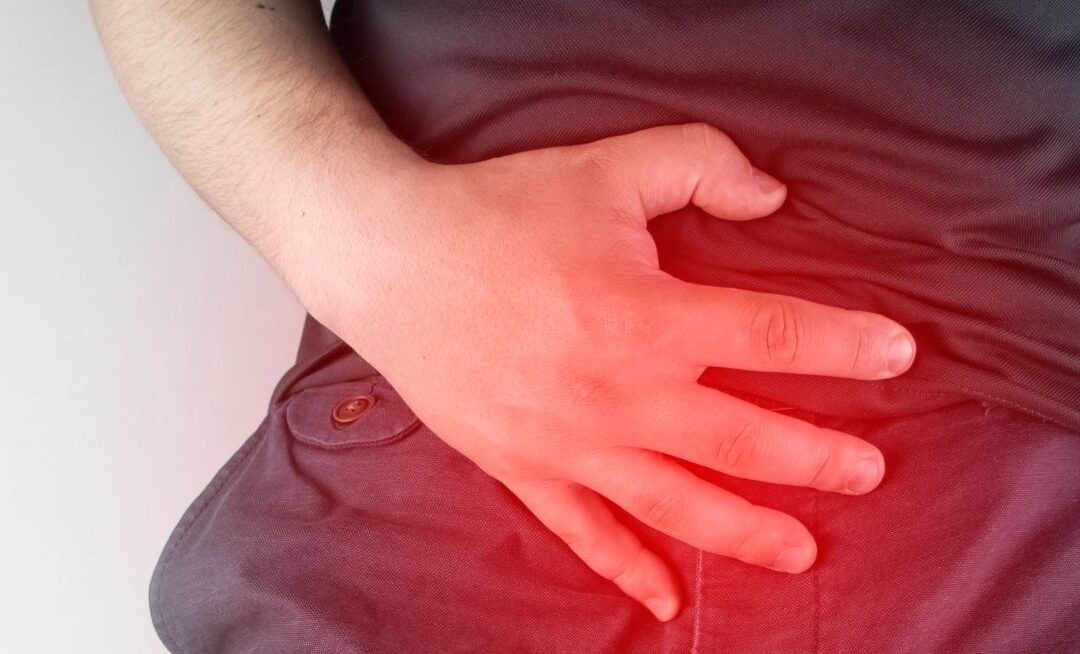
by codm | Oct 4, 2024
Lifestyle Modifications for Overactive Bladder (OAB): Managing Symptoms through Lifestyle Changes
Lifestyle modifications can play a crucial role in managing overactive bladder (OAB) symptoms and improving overall bladder health. By making simple changes to your daily routine, you can potentially reduce the frequency and urgency of urination. Here’s a deep dive into lifestyle modifications for OAB:
Bladder Training: Bladder training involves gradually increasing the time between bathroom visits to improve bladder control. Start by urinating at set intervals (e.g., every 30 minutes) and gradually increase the interval by 15-30 minutes each week. This helps train your bladder to hold urine for longer periods.
Fluid Management: While it’s important to stay hydrated, reducing fluid intake in the evening can help reduce nighttime urination (nocturia). Avoiding caffeine and alcohol, which can irritate the bladder, may also help reduce urgency and frequency.
Healthy Diet: Certain foods and beverages can irritate the bladder and worsen OAB symptoms. Avoiding spicy foods, acidic foods (e.g., citrus fruits, tomatoes), artificial sweeteners, and carbonated drinks can help reduce bladder irritation.
Pelvic Floor Exercises: Kegel exercises can help strengthen the pelvic floor muscles, which support the bladder and urethra. Stronger pelvic floor muscles can improve bladder control and reduce leakage. To do Kegel exercises, contract the muscles you would use to stop the flow of urine, hold for a few seconds, and then relax. Repeat several times a day.
Maintain a Healthy Weight: Excess weight can put pressure on the bladder and exacerbate OAB symptoms. Maintaining a healthy weight through a balanced diet and regular exercise can help reduce pressure on the bladder and improve bladder control.
Quit Smoking: Smoking can irritate the bladder and worsen OAB symptoms. Quitting smoking can improve bladder health and reduce the frequency and urgency of urination.
Scheduled Bathroom Visits: Establishing a regular bathroom schedule can help train your bladder and reduce urgency. Try to urinate at set times throughout the day, even if you don’t feel the urge.
Stress Management: Stress and anxiety can worsen OAB symptoms. Practicing relaxation techniques such as deep breathing, meditation, or yoga can help reduce stress and improve bladder control.
Avoiding Constipation: Constipation can worsen OAB symptoms by putting pressure on the bladder. Eating a high-fiber diet, staying hydrated, and getting regular exercise can help prevent constipation.
Wear Proper Clothing: Avoid tight clothing around the waist and abdomen, as this can put pressure on the bladder and increase urgency.
Incorporating these lifestyle modifications into your daily routine can help improve bladder control and reduce the impact of OAB on your daily life. However, it’s important to consult with a healthcare professional before starting any new exercise or diet regimen, especially if you have underlying health conditions.

by codm | Oct 4, 2024
Overactive Bladder (OAB) Triggers: Understanding What Sets It Off
Overactive bladder (OAB) can be triggered by various factors that can exacerbate symptoms and increase the frequency and urgency of urination. Identifying these triggers is crucial for managing OAB effectively. Here’s a deep dive into the common triggers of OAB:
Fluid Intake: Excessive fluid intake, especially of caffeinated, carbonated, or alcoholic beverages, can irritate the bladder and increase urine production, leading to more frequent urges to urinate.
Certain Foods and Beverages: Certain foods and beverages, such as spicy foods, citrus fruits and juices, tomatoes, and artificial sweeteners, can irritate the bladder and trigger OAB symptoms in some individuals.
Medications: Some medications, such as diuretics, antihistamines, antidepressants, and muscle relaxants, can affect bladder function and increase the risk of OAB symptoms.
Constipation: Constipation can put pressure on the bladder and pelvic floor muscles, leading to increased urgency and frequency of urination. Addressing constipation through diet and lifestyle changes can help manage OAB symptoms.
Urinary Tract Infections (UTIs): UTIs can irritate the bladder and increase the frequency and urgency of urination. Treating UTIs promptly can help alleviate OAB symptoms.
Hormonal Changes: Hormonal fluctuations, such as those occurring during pregnancy, menopause, or menstruation, can affect bladder function and trigger OAB symptoms in some individuals.
Stress and Anxiety: Emotional stress and anxiety can exacerbate OAB symptoms by increasing sensitivity to bladder sensations and affecting bladder control mechanisms.
Temperature Changes: Extreme hot or cold temperatures can affect bladder function and trigger OAB symptoms in some individuals.
Certain Activities: Activities that put pressure on the bladder, such as lifting heavy objects, running, or jumping, can trigger OAB symptoms, especially in individuals with weakened pelvic floor muscles.
Neurological Conditions: Neurological conditions such as Parkinson’s disease, stroke, and multiple sclerosis can affect nerve signals to the bladder, leading to OAB symptoms.
Bladder Irritants: Chemical irritants such as perfumes, powders, and dyes in personal hygiene products can irritate the bladder and trigger OAB symptoms in some individuals.
Identifying and avoiding these triggers, when possible, can help manage OAB symptoms and improve quality of life. It’s important to work with a healthcare professional to develop a personalized treatment plan that addresses your specific triggers and symptoms.

by codm | Oct 4, 2024
Symptoms of Overactive Bladder (OAB): Understanding the Common Signs
Overactive bladder (OAB) is characterized by a combination of urinary symptoms that can significantly impact quality of life. Recognizing these symptoms is the first step toward effective management and treatment. Here’s a deep dive into the most common signs of OAB:
Urinary Urgency: One of the hallmark symptoms of OAB is a sudden, compelling urge to urinate that is difficult to control. This sensation can occur suddenly and may be accompanied by a fear of leakage (urge incontinence).
Frequent Urination: People with OAB often experience an increased frequency of urination, typically defined as urinating more than eight times in a 24-hour period. This frequent urge to urinate can disrupt daily activities and sleep patterns.
Nocturia: Nocturia refers to the need to wake up from sleep to urinate. Individuals with OAB may experience nocturia multiple times during the night, which can lead to sleep disturbances and fatigue.
Urge Incontinence: Urge incontinence is the involuntary loss of urine following a sudden, strong urge to urinate. This can result in leakage before reaching the toilet, which can be embarrassing and distressing.
Increased Daytime Frequency: OAB can also lead to increased daytime frequency of urination, with individuals feeling the need to urinate more frequently than usual during waking hours.
Accidental Leakage: In addition to urge incontinence, OAB can also cause accidental leakage of urine during physical activities, such as lifting, bending, or exercising (stress incontinence).
Incomplete Emptying: Some individuals with OAB may experience a sensation of incomplete emptying of the bladder after urination, leading to a persistent urge to urinate.
Bladder Pain: In some cases, OAB may be associated with bladder pain or discomfort (interstitial cystitis), which can worsen symptoms and impact quality of life.
Anxiety and Stress: The symptoms of OAB can lead to increased anxiety and stress, as individuals may constantly worry about finding a bathroom or experiencing leakage in public settings.
Impact on Quality of Life: OAB can have a significant impact on quality of life, affecting social activities, work productivity, and emotional well-being.
Recognizing these symptoms and seeking prompt medical evaluation is important for proper diagnosis and management of OAB. Treatment options may include lifestyle modifications, behavioral therapies, medications, and in some cases, surgical interventions. If you are experiencing symptoms of OAB, it’s important to consult with a healthcare professional for an accurate diagnosis and personalized treatment plan.

by codm | Oct 4, 2024
Causes of Overactive Bladder (OAB): Understanding Contributing Factors
Overactive bladder (OAB) is a complex condition influenced by various factors that can contribute to its development. Understanding these underlying causes is crucial for effective management and treatment. Here’s a deep dive into the factors that can contribute to the development of OAB:
Muscle Dysfunction: Dysfunction of the detrusor muscle, which controls bladder contractions, is a common cause of OAB. When the detrusor muscle becomes overactive or contracts involuntarily, it can lead to symptoms such as urgency and frequency.
Nerve Issues: Nerve damage or dysfunction can disrupt the normal signaling between the brain and the bladder, leading to OAB. Conditions such as diabetes, stroke, multiple sclerosis, and spinal cord injuries can damage the nerves that control bladder function.
Bladder Conditions: Certain bladder conditions, such as bladder stones, bladder cancer, and chronic bladder inflammation (interstitial cystitis), can irritate the bladder and lead to symptoms of OAB.
Infections: Urinary tract infections (UTIs) can cause inflammation and irritation of the bladder, leading to symptoms such as urgency, frequency, and incontinence. While UTIs are often temporary, recurrent infections can contribute to the development of OAB over time.
Bladder Obstruction: Conditions that cause obstruction or blockage of the urinary tract, such as benign prostatic hyperplasia (BPH) in men or pelvic organ prolapse in women, can lead to OAB symptoms by increasing bladder pressure and causing bladder muscle overactivity.
Medications: Certain medications, such as diuretics, anticholinergics, and alpha-blockers, can affect bladder function and contribute to OAB symptoms. These medications may increase urine production, interfere with nerve signaling, or relax bladder muscles excessively.
Hormonal Changes: Hormonal fluctuations, particularly during menopause in women, can affect bladder function and contribute to symptoms of OAB. Decreased estrogen levels can lead to changes in bladder tissue and decreased bladder control.
Age: Aging is a significant risk factor for OAB, as changes in bladder structure and function occur with age. The bladder may become less elastic, and bladder capacity may decrease, leading to increased urgency and frequency of urination.
Lifestyle Factors: Certain lifestyle factors, such as excessive caffeine or alcohol consumption, smoking, and obesity, can exacerbate OAB symptoms. Caffeine and alcohol can irritate the bladder, while smoking and obesity can contribute to bladder dysfunction and pelvic floor weakness.
Psychological Factors: Stress, anxiety, and depression can exacerbate OAB symptoms by increasing sensitivity to bladder sensations and affecting bladder control mechanisms.
Understanding the various factors that can contribute to the development of OAB is essential for implementing effective management strategies. Treatment approaches may include lifestyle modifications, behavioral therapies, medications, and in some cases, surgical interventions. If you are experiencing symptoms of OAB, it’s important to consult with a healthcare professional for a comprehensive evaluation and personalized treatment plan.

by codm | Mar 18, 2024
Overactive Bladder (OAB): Understanding Symptoms, Causes, and Management
Overactive bladder (OAB) is a common condition characterized by a sudden and uncontrollable urge to urinate, often accompanied by frequent urination and nocturia (waking up at night to urinate). It can significantly impact quality of life, affecting both physical and emotional well-being. Here’s a deep dive into OAB, including its symptoms, causes, and management:
Symptoms of Overactive Bladder:
Urgency: A sudden, intense urge to urinate that is difficult to control.
Frequency: The need to urinate more often than usual, often eight or more times in 24 hours.
Nocturia: Waking up two or more times during the night to urinate.
Urge Incontinence: Leaking urine after feeling the sudden urge to urinate.
Causes of Overactive Bladder:
Muscle Dysfunction: Overactive bladder is often caused by involuntary contractions of the detrusor muscle, which controls the bladder.
Nerve Issues: Nerve damage or dysfunction, often due to conditions such as diabetes, stroke, or multiple sclerosis, can disrupt the signals between the brain and the bladder.
Bladder Capacity: Some individuals may have a smaller bladder capacity, leading to more frequent urges to urinate.
Infections and Other Conditions: Urinary tract infections (UTIs), bladder stones, and bladder cancer can also cause symptoms similar to OAB.
Diagnosis of Overactive Bladder:
Medical History: Your Doctor will ask about your symptoms, medical history, and any medications you are taking.
Physical Examination: A physical examination may be conducted to check for signs of infection or other underlying conditions.
Urinalysis: A urine sample may be analyzed for signs of infection or other abnormalities.
Bladder Diary: Keeping a bladder diary can help track your fluid intake, urinary frequency, and episodes of urgency and incontinence.
Treatment and Management of Overactive Bladder:
Behavioral Therapies: Bladder training, scheduled toilet trips, and pelvic floor exercises (Kegels) can help improve bladder control.
Lifestyle Changes: Limiting caffeine and alcohol intake, maintaining a healthy weight, and staying hydrated can help manage OAB symptoms.
Medications: Anticholinergic medications and beta-3 agonists can help relax the bladder muscles and reduce urgency and frequency.
Nerve Stimulation: Sacral nerve stimulation or percutaneous tibial nerve stimulation (PTNS) can help improve bladder control by modulating nerve signals.
Surgery: In severe cases, surgery such as bladder augmentation or urinary diversion may be considered.
Conclusion:
Overactive bladder is a common condition that can significantly impact quality of life. However, with proper diagnosis and management, the symptoms of OAB can be effectively controlled, allowing individuals to lead active and fulfilling lives. If you are experiencing symptoms of OAB, it’s important to consult with your Doctor for an accurate diagnosis and appropriate treatment plan.







